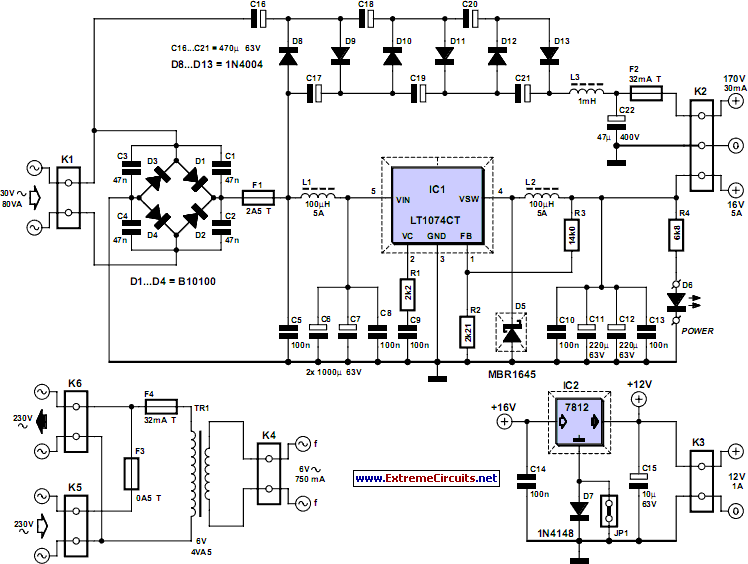
frequency conversion circuit composed of TC4013

This circuit can convert an input frequency ranging from 0 to 100 Hz into an output voltage of 0 to 10 V. It utilizes the TC4013 monostable multivibrator to shape and amplify the input pulse, which has a width of 100 µs. The TC4013 triggers a transistor (VT1) to turn on when the input voltage of comparator A1 (UQ) is less than the reference voltage (UR), resulting in a positive output. The transistor VT1 conducts for a duration of 100 µs before returning to its off state.
The electronic circuit operates by taking a low-frequency input signal and transforming it into a higher voltage output. The TC4013, a dual D-type flip-flop, is configured in a monostable mode, which means that it produces a single output pulse in response to a triggering input. The input pulse width of 100 µs is critical for ensuring that the circuit operates correctly, as it determines the duration for which the output voltage is generated.
When the input signal is applied, the TC4013 detects the rising edge of the pulse. If the input voltage at the comparator A1 is lower than the reference voltage UR, the comparator outputs a high signal, which activates the transistor VT1. This transistor acts as a switch, allowing current to flow through the load connected to the output, thus generating a voltage that can range from 0 to 10 V depending on the circuit design and load characteristics.
The circuit is designed to switch states quickly, with the transistor VT1 being turned on only for the duration of the input pulse (100 µs). After this time, the TC4013 resets, and the transistor returns to its off state, stopping the output voltage. This precise timing allows for effective control of the output voltage in applications where pulse-width modulation or frequency-to-voltage conversion is required. The overall design ensures that the circuit remains responsive to input frequency changes while maintaining the desired output characteristics.It can switch 0-100Hz input frequency to 0 -l0V output voltage. In the circuit, TC4013 is a monostable multivibrator, which could shape and amplify input pulse, and the input pulse width is 1OO?s. TC4013 could trigger VTl to turn on, when the input voltage of of comparator Al UQ🔗 External reference
The electronic circuit operates by taking a low-frequency input signal and transforming it into a higher voltage output. The TC4013, a dual D-type flip-flop, is configured in a monostable mode, which means that it produces a single output pulse in response to a triggering input. The input pulse width of 100 µs is critical for ensuring that the circuit operates correctly, as it determines the duration for which the output voltage is generated.
When the input signal is applied, the TC4013 detects the rising edge of the pulse. If the input voltage at the comparator A1 is lower than the reference voltage UR, the comparator outputs a high signal, which activates the transistor VT1. This transistor acts as a switch, allowing current to flow through the load connected to the output, thus generating a voltage that can range from 0 to 10 V depending on the circuit design and load characteristics.
The circuit is designed to switch states quickly, with the transistor VT1 being turned on only for the duration of the input pulse (100 µs). After this time, the TC4013 resets, and the transistor returns to its off state, stopping the output voltage. This precise timing allows for effective control of the output voltage in applications where pulse-width modulation or frequency-to-voltage conversion is required. The overall design ensures that the circuit remains responsive to input frequency changes while maintaining the desired output characteristics.It can switch 0-100Hz input frequency to 0 -l0V output voltage. In the circuit, TC4013 is a monostable multivibrator, which could shape and amplify input pulse, and the input pulse width is 1OO?s. TC4013 could trigger VTl to turn on, when the input voltage of of comparator Al UQ





